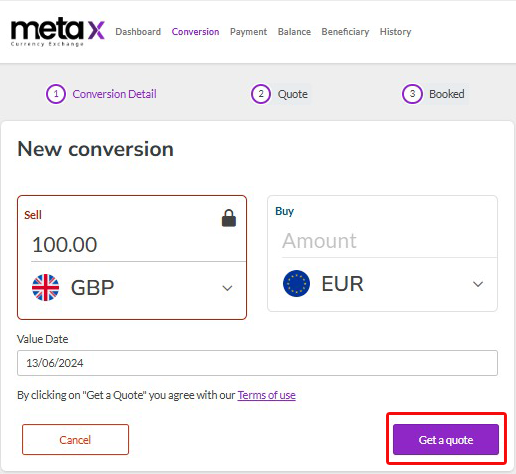
GBP
Sterling has dipped to its lowest level against the Dollar since November, now sitting just above the 1.24 mark. This decline is primarily attributed to the Dollar's strength, driven by rising tensions in the Middle East that enhance the Dollar’s safe-haven appeal.
Against the Euro, Sterling is performing better, trading around 1.1710. The Euro's weakness is largely due to the ECB’s recent decision to keep interest rates unchanged for the sixth consecutive time. ECB official Lane highlighted the bank’s focus on data and expressed optimism about Eurozone inflation nearing the ECB’s 2% target.
In the UK, recent jobs data showed an unexpected drop in the number of people claiming unemployment benefits, which came in at 10.9K compared to the forecasted 17.2K and the previous 16.8K. Despite expectations for the unemployment rate to remain steady at 4%, it unexpectedly rose to 4.2%. Additionally, employment change figures fell to -156K from -89K, indicating uncertainty about the economic landscape. This uncertainty might prompt Bank of England policymakers to consider interest rate cuts sooner than expected.
This week, increased volatility is anticipated as the UK Office for National Statistics (ONS) releases consumer and producer inflation data for March on Wednesday. The headline CPI is projected to rise by 3.1%, down from the previous 3.4%. If the inflation data shows a decline as expected, it could heighten speculation about the BoE lowering interest rates from the August meeting. Additionally, UK Retail Sales data due on Friday will provide further insights into the general economy’s performance.
EUR
The Euro is struggling to gain traction against other currencies, despite recent industrial production data showing a slight improvement in the Eurozone.
In February, industrial output rebounded by 0.8%, following a 3% decline the previous month. This aligns with market expectations, with increased production noted in the capital goods and durable consumer goods sectors. However, market response has been muted, as this modest recovery follows a broader trend of declining production throughout the first quarter of 2024.
Looking ahead, we anticipate new industrial production data and ZEW investor confidence figures for the Eurozone. Additionally, several ECB speakers, including President Christine Lagarde, will address the spring IMF meetings in Washington on Wednesday. It’s expected that she will reiterate the possibility of an ECB rate cut in June and highlight potential divergences in trans-Atlantic monetary policy, which could lead to bearish sentiment for EUR|USD.
USD
Amidst a generally bullish sentiment surrounding the US Dollar, investors are now delaying their expectations for the first Federal Reserve interest rate cut to September from June, following stronger-than-expected US consumer inflation figures.
Geopolitical tensions in the Middle East are also enhancing the Dollar’s safe-haven appeal. As a result, the GBP|USD pair is likely to face downward pressure, with any attempted recovery seen as an opportunity to sell. Traders will closely monitor US macro data and speeches by FOMC members, including Fed Chair Jerome Powell, for further insights.
Robust US Retail Sales data, along with strong labor demand and higher consumer price inflation in March, suggest that Fed policymakers may delay rate cuts until later this year
San Francisco Fed Bank President Mary Daly emphasized that there is no rush to start reducing interest rates, stressing the need to ensure inflation returns to the target rate of 2%. She suggested maintaining restrictive interest rates for a longer period to achieve this goal.
If you have an upcoming currency requirement and would like to learn more about what is affecting the markets in the coming weeks, please contact us at + 44 751 954 0886.
HELP & SUPPORT
If you require any further assistance, please contact us on the following:
+44 204 600 0540
or via email at support@metaxpayments.co.uk

